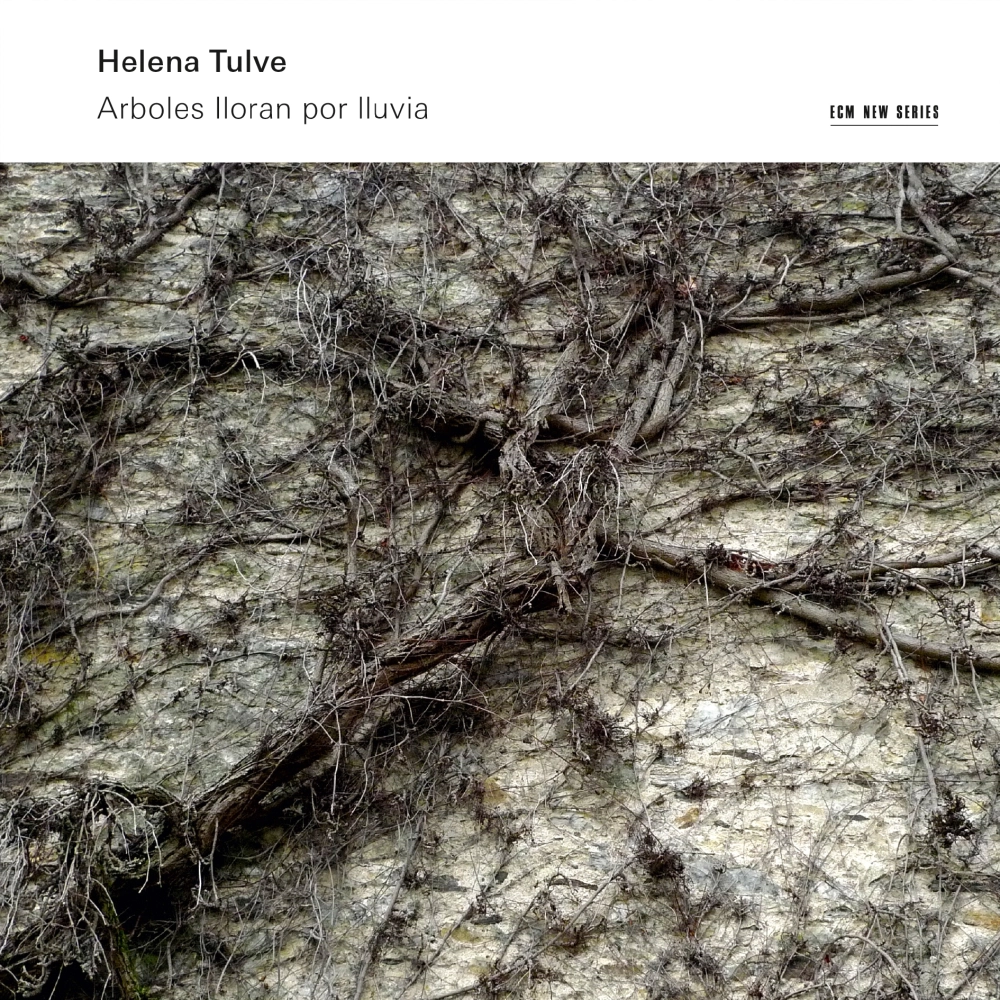Recorded in churches in Tallinn as well as the Estonian Concert Hall, the five compositions heard on “Arboles lloran por lluvia” (Trees cry for rain) give deeper insight into the unique sound-world of Helena Tulve, into music which is nourished by both contemporary and ancient currents. Tulve draws upon a wide-range of inspirational sources. She explores the raw fabric of sound and the nature of timbre in both analytical and instinctive ways, in compositions that are unmistakably her own, yet her work is inclusive – here incorporating aspects of Gregorian chant, melody from Yemenite Jewish tradition, and texts from Sufi, Sephardic and Christian mystic poetry. Strong performances by the soloists, above all Arianne Savall – featured on “silences/larmes”, “L’Équinoxe de l’âme” and the title track – and the choral, chamber and orchestral forces marshalled by Jaan-Eik Tulve and Olari Elts make Helena Tulve’s second ECM New Series recording a most impressive successor to the critically-acclaimed “Lijnen”.
Helena Tulve: Arboles Iloran por lluvia
Arianna Savall, Vox Clamantis, Jaan-Eik Tulve, Estonian National Symphony Orchestra, Olari Elts
- 1Reyah hadas 'ala
14:10 - 2silences / larmes
11:06 - 3L'Équinoxe de l'âme
11:19 - 4Arboles lloran por lluvia
12:22 - 5Extinction des choses vues
11:50
The compositions, all receiving their recorded premieres here, are “Reyah hadas 'ala”(written in 2005), “silences/larmes”” (2006), “Arboles lloran por lluvia” (2006), “Extinction des choses vues” (2007), and “L'Équinoxe de l'âme”(2008).
“Reyah hadas 'ala” (the aroma of the myrtle rises) unites the Vox Clamantis singers with early music group Ensemble Hortus Musicus. In this piece, Tulve incorporates a song of the Yemenite Jews, and a text written by Shalom Shabazi, a Yemenite poet, rabbi and mystic of the 17th century.
In the sparse “silences/larmes” (silences/tears), the ghostly sounds of tuned glasses, played by the composer, provide atmospheric context for the exchanges of voice and oboe. The metaphysical poems sung by Arianna Savall were written by Mother Immaculata Astre, the Abbess of Le Pesquié.
The source for L’Équinoxe de l’âme (Equinox of the Soul) is Safir-i-Simurgh (The Calling of the Simurgh) written by Sufi mystic Shahab al-Din Suhrawardi (1155–1191). As liner note author Kristina Kõrver remarks, “The Simurgh is a mythical bird, who feeds on fire and whose nest is on the borderline between the visible and invisible worlds. The illuminated soul, whose elusive nature is revealed in the paradoxes and parables, in the intensive and detail-rich musical material, appears in the dense, throbbing network of instrumental lines as well as in the song that freely and easily yet powerfully floats above them.“
The narrative of the Sephardic poems Arboles lloran por lluvia (Trees Cry for Rain) finds its expressive echo in the music. “Formally it tells the story on two levels…it is raining and the raindrops bounce in the vocal lines and spatter in the nyckelharp part. Melodic lines are combined in a quasi-heterophonic texture, performing a sophisticated variation, which emphasises a wish for reunification.”
The musical ideas of “Extinction des choses vues” (The Extinction of Things Seen) are inspired by “Extase blanche” , a text by Jesuit thinker Michel de Certeau.
You need to load content from reCAPTCHA to submit the form. Please note that doing so will share data with third-party providers.
More InformationYou need to load content from Turnstile to submit the form. Please note that doing so will share data with third-party providers.
More InformationYou are currently viewing a placeholder content from Facebook. To access the actual content, click the button below. Please note that doing so will share data with third-party providers.
More InformationYou are currently viewing a placeholder content from Instagram. To access the actual content, click the button below. Please note that doing so will share data with third-party providers.
More InformationYou are currently viewing a placeholder content from X. To access the actual content, click the button below. Please note that doing so will share data with third-party providers.
More Information



